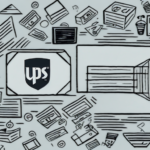Why Shipping Rates Matter to Your Business
Shipping rates significantly impact your business's profitability, especially if your operations heavily rely on logistics. High shipping costs can erode your margins, making it difficult to stay competitive in the market. When shipping fees cause your products to be overpriced, customers may opt for alternatives, leading to lost sales and revenue. By understanding UPS's shipping rates and implementing strategies to reduce them, your business can achieve substantial cost savings.
One effective strategy to lower your shipping expenses is to negotiate rates directly with your carrier. Many carriers, including UPS, offer discounts to high-volume shippers or businesses that commit to exclusive partnerships. Additionally, leveraging a third-party logistics provider (3PL) can be advantageous. 3PLs often have established relationships with carriers and can secure better rates on your behalf, thanks to their bulk shipping volumes and expertise.
Another crucial factor affecting shipping costs is the distance your packages need to travel. If your business primarily serves customers within a specific region, using a regional carrier instead of a national one can be more cost-effective. Regional carriers typically offer lower rates for shorter distances, helping you manage your shipping budget more efficiently.
Understanding UPS Shipping Rates
UPS calculates shipping rates based on several key factors, including package weight, destination, delivery speed, and any additional services requested. The standard shipping rates are categorized into different zones, ranging from Zone 1 (closest) to Zone 8 (farthest). The greater the distance your package must travel, the higher the shipping cost.
Businesses that ship frequently or in large volumes can benefit from discounted rates. UPS provides various tools and resources to help businesses optimize their shipping strategies and reduce costs. These include:
- Online Shipping Calculators: Estimate shipping costs based on package dimensions, weight, and destination.
- Shipping Software Integrations: Streamline your shipping process by integrating UPS with your existing software systems.
- Customized Shipping Solutions: Tailored services to meet the specific needs of your business.
Implementing these tools effectively can lead to significant savings and more efficient shipping operations.
Factors that Affect UPS Shipping Rates
Several elements influence the shipping rates you encounter with UPS. Understanding these factors allows you to make informed decisions and optimize your shipping strategy:
- Package Weight and Dimensions: Heavier and larger packages incur higher shipping costs.
- Package Value: High-value items may require additional insurance, increasing the overall cost.
- Shipping Destination: International shipping generally costs more than domestic shipping due to longer distances and additional handling.
- Delivery Speed: Expedited shipping options, such as overnight or two-day delivery, are more expensive than standard shipping.
- Additional Services: Services like insurance, signature confirmation, and special handling can add to the shipping cost.
According to the UPS International Services, shipping to remote areas or during peak seasons can further impact rates. Planning your shipments strategically can help mitigate these costs.
How to Negotiate with UPS for Cheaper Rates
For businesses that ship in high volumes, negotiating with UPS can lead to significant cost reductions. Here are some steps to effectively negotiate lower rates:
- Analyze Your Shipping Data: Review your shipping patterns to identify areas where costs can be reduced, such as optimizing package sizes or consolidating shipments.
- Prepare a Strong Case: Demonstrate your business's shipping volume and loyalty to UPS. Highlight how an improved rate structure can lead to a long-term partnership.
- Leverage a 3PL: As mentioned earlier, third-party logistics providers can negotiate better rates on your behalf due to their extensive shipping networks and volumes.
- Explore UPS's Loyalty Programs: Programs like UPS My Choice offer benefits such as free package upgrades and waived fees for frequent shippers.
Research indicates that businesses can save up to 15% on shipping costs through effective negotiation strategies (Forbes).
Tips for Reducing Shipping Costs with UPS
Implementing strategic measures can help reduce your shipping expenses with UPS. Consider the following tips:
- Optimize Your Packaging: Use appropriately sized boxes to minimize weight and dimensions. Avoid overpacking, which can lead to unnecessary costs.
- Consolidate Shipments: Combine multiple orders into a single shipment to reduce the number of packages and lower overall costs.
- Use UPS Flat-Rate Shipping Boxes: Ideal for small, heavy items, flat-rate boxes offer predictable pricing regardless of weight or distance.
- Choose Ground Shipping: Whenever possible, opt for UPS Ground services, which are typically more affordable than air shipping options.
- Accurately Weigh and Measure Packages: Ensure that your package dimensions and weight are accurate to avoid overcharges.
By adopting these practices, businesses can achieve significant savings on their shipping budgets.
How to Take Advantage of UPS Discounts and Promotions
UPS frequently runs discounts and promotions that can help businesses save on shipping costs. To maximize these savings:
- Stay Informed: Subscribe to UPS email alerts to receive updates on the latest promotions and discounts.
- Regularly Check the UPS Website: Visit the UPS promotions page to explore current offers and seasonal deals.
- Communicate with Customer Service: When arranging shipments, inform customer service representatives about any applicable discounts or promotions to ensure you receive the savings.
For example, during peak seasons like the holiday period, UPS may offer limited-time discounts on specific shipping services, providing businesses an opportunity to reduce their shipping expenditures (UPS Promotions).
Using UPS Zone Skipping to Lower Your Shipping Costs
UPS Zone Skipping is a cost-saving service that allows businesses to bypass certain shipping zones, reducing the distance packages travel and, consequently, the shipping costs. This is particularly beneficial for businesses that ship to customers in remote or rural areas.
Benefits of UPS Zone Skipping include:
- Cost Reduction: By skipping unnecessary zones, businesses can lower their shipping expenses.
- Environmental Impact: Reducing the distance packages travel helps minimize the carbon footprint associated with shipping.
- Improved Delivery Times: Consolidating shipments can lead to more efficient delivery schedules, enhancing customer satisfaction.
According to a study by the UPS Global Insights Center, businesses utilizing zone skipping can achieve up to 10% savings on their shipping costs.
Key Strategies for Efficient Packaging and Labeling with UPS
Efficient packaging and labeling are essential for minimizing shipping costs and ensuring timely deliveries. Implement the following strategies to enhance your packaging and labeling processes:
- Use the Right Size Box: Selecting an appropriately sized box reduces both weight and dimensional charges. Avoid using oversized boxes that increase shipping costs.
- Invest in Quality Packaging Materials: Durable packaging minimizes the risk of damage during transit, potentially reducing insurance claims and additional fees.
- Optimize Labeling: Ensure that labels are clear, accurate, and properly affixed to prevent misrouting and delays. Utilize UPS's recommended labeling formats for efficiency.
- Implement Barcode Scanning: Automate your labeling process with barcode scanning to improve accuracy and speed up the shipping process.
Effective packaging and labeling not only lower costs but also enhance the overall shipping experience for your customers, leading to increased satisfaction and loyalty.
Planning Ahead: Scheduling Shipments and Batch Processing for Cost Savings
Proactive planning in scheduling shipments and batch processing can lead to significant cost savings and operational efficiencies:
- Schedule Shipments in Advance: Planning your shipments ahead of time allows you to choose the most cost-effective shipping options, avoiding rush fees during peak periods.
- Batch Process Orders: Consolidating multiple orders into a single shipment reduces the number of packages and lowers overall shipping costs.
- Manage Inventory Effectively: Advanced scheduling helps in maintaining optimal inventory levels, preventing stockouts and excess inventory.
- Improve Shipping Efficiency: Streamlined scheduling reduces the time and resources required to handle shipments, increasing overall operational efficiency.
Research from the Society for Human Resource Management (SHRM) indicates that businesses implementing batch processing strategies can reduce shipping-related costs by up to 12% annually.
Choosing the Right UPS Service Level for Your Needs and Budget
UPS offers a variety of shipping service levels, each tailored to different delivery speeds and pricing structures. Selecting the appropriate service level is crucial for balancing cost and delivery expectations:
- UPS Ground: Ideal for cost-effective, day-definite delivery within North America. Suitable for non-urgent shipments.
- UPS 3 Day Select: Provides delivery within three business days, offering a balance between speed and cost.
- UPS 2nd Day Air: Ensures delivery by the end of the second business day.
- UPS Next Day Air: Guarantees next business day delivery by a specific time.
- UPS Freight: Suitable for large, heavy shipments requiring specialized handling.
When determining the appropriate service level, consider the following factors:
- Destination: International shipments may necessitate faster service levels to meet delivery deadlines.
- Package Size and Weight: Larger and heavier packages might be more cost-effective to ship via UPS Freight.
- Value of Contents: High-value items may require expedited shipping with additional insurance options.
- Customer Expectations: Align your shipping service levels with your customers' delivery expectations to enhance satisfaction.
Selecting the right UPS service level ensures that your shipments are delivered on time without incurring unnecessary costs, thereby optimizing your shipping strategy.
Comparing Other Carrier Rates to Determine if UPS is the Best Option
Before committing to UPS as your primary shipping carrier, it's advisable to compare their rates and services with those of other carriers such as FedEx, DHL, and USPS. Consider the following aspects during your comparison:
- Delivery Speed: Compare the delivery timelines offered by different carriers to ensure they meet your business needs.
- Shipping Rates: Analyze the cost structures and find the carrier that offers the best rates for your shipping volume and destinations.
- Additional Services: Evaluate the additional services provided, such as tracking, insurance, and customer support, to determine their value.
- Carrier Reliability: Consider the carrier's reputation for on-time deliveries and handling of packages to minimize disruptions.
- Contract Terms: Review the contract terms and flexibility offered by each carrier to accommodate your business's growth and changing needs.
According to industry reports from Forbes, businesses that regularly assess and compare carrier performances can reduce shipping costs by up to 20% annually.
Calculating Your Savings: Examples of Successful Cost Reduction Strategies
Understanding the potential savings from various cost reduction strategies can help you make informed decisions about your shipping operations. Here are some examples of successful strategies implemented by businesses:
- Optimized Packaging: A retail company reduced their shipping costs by 15% by switching to smaller, lighter packaging materials, thereby lowering their overall shipping weight and dimensional charges.
- Consolidated Shipments: An e-commerce business consolidated multiple orders into single shipments, decreasing the number of packages shipped and saving approximately 10% on shipping fees.
- Negotiated Rates: A manufacturing firm negotiated discounted rates with UPS based on their high shipping volume, resulting in a 12% reduction in their annual shipping expenses.
- Utilized Flat-Rate Boxes: A subscription box service implemented UPS flat-rate shipping boxes for heavy items, ensuring predictable shipping costs and reducing variability in their shipping budget.
These examples demonstrate how tailored strategies can lead to significant cost savings and improved shipping efficiency.
The Importance of Tracking and Analytics in Evaluating Shipping Costs
Implementing tracking and analytics tools is essential for monitoring and evaluating your shipping costs. These tools provide valuable insights that help businesses make data-driven decisions to optimize their shipping strategies:
- Cost Monitoring: Track shipping expenses across different carriers, service levels, and destinations to identify areas for cost reduction.
- Performance Analysis: Analyze delivery times, package handling, and customer satisfaction to assess the effectiveness of your shipping operations.
- Trend Identification: Identify seasonal trends and peak periods to adjust your shipping strategy accordingly, avoiding unnecessary costs during high-demand times.
- Inventory Management: Use shipping data to forecast inventory needs and ensure efficient stock levels, minimizing storage costs and stockouts.
According to the Harvard Business Review, businesses that leverage tracking and analytics in their shipping operations can increase efficiency by up to 25% and reduce costs by 15%.
Final Thoughts: Making Smart Decisions to Save Money on Shipping with UPS
Reducing shipping costs with UPS requires a comprehensive understanding of their rate structures, strategic planning, and the implementation of cost-saving measures tailored to your business's unique needs. By:
- Understanding the various factors that influence UPS shipping rates
- Negotiating favorable rates based on your shipping volume
- Optimizing your packaging and labeling processes
- Exploiting discounts, promotions, and specialized services like UPS Zone Skipping
- Utilizing tracking and analytics to inform your shipping strategy
you can effectively lower your shipping expenses, enhance operational efficiency, and maintain a competitive edge in the market. Continuously evaluate and adjust your shipping strategies to adapt to changing market conditions and business growth, ensuring sustained cost savings and improved customer satisfaction.




















